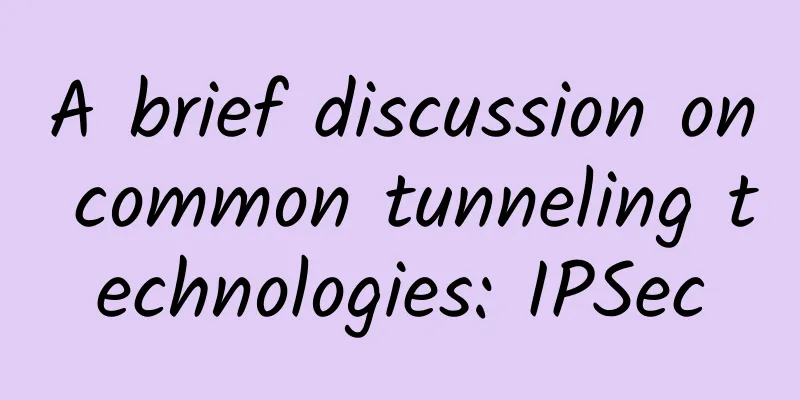Finally someone has explained 5G+AI clearly

01 The concept of 5GThe full name of 5G is the fifth generation mobile communication technology. It is the latest generation of digital cellular network technology and began to be deployed on a large scale around the world in 2019. In 5G networks, "cells" refer to the service areas covered by providers. Sound and images are converted into analog signals in mobile phones and then converted into bit streams for transmission through analog-to-digital converters. All 5G wireless devices in cells can communicate with local antenna arrays, transmitters, receivers, etc. through radio waves. 02 Principles of 5GThe biggest feature of 5G is the use of higher frequency radio waves (FR1, FR2 bands) to achieve higher data transmission rates. The millimeter wave band has a high bandwidth and a large amount of information. The 5G network uses wider channels to communicate with wireless devices, thereby achieving the goal of transmitting more data per second. However, high-frequency signals have a weakness in that they have poor wall penetration, which results in a much smaller signal coverage range for base stations than 4G. Therefore, 5G uses micro base stations to ensure coverage. Micro base stations are small and can be installed anywhere. At the same time, due to their small coverage range, their power will be greatly reduced, which can improve users' Internet access comfort. To avoid wasting resources, micro base stations can also perform beamforming to direct electromagnetic waves toward devices connected to the base station, and can adjust their direction according to the movement of the device. 03 Characteristics of 5G1. High speed 5G provides transmission speeds of more than 1GB/s, and can even reach 10GB/s. Compared with 4G's peak download speed of 300M/s, 5G can theoretically support up to 100 times the speed increase. 2. Ubiquitous Network Ubiquitous network refers to the ubiquitous network, which aims to achieve smooth communication through any person and any object at any time and place. In the 5G era, in order to ensure service and experience, the previous network coverage dead spots must be eliminated. Therefore, the realization of ubiquitous network is an important condition for ensuring the 5G experience. 3. Low latency 5G requires air interface latency to be less than 1ms and end-to-end latency to be less than 5ms. 5G has made technical innovations in the wireless latency between user equipment and base stations, the backhaul latency between base stations and core networks, core network latency, and Internet transmission latency to shorten the overall latency. 04 5G General Applications1. Internet of Vehicles 5G has the characteristics of high speed and low latency, and is an important cornerstone for the development of the Internet of Vehicles industry. Therefore, the Internet of Vehicles must be an important application field of 5G. 5G can provide real-time download of high-precision maps, which can meet more accurate positioning management, overall management of fleets, and support UBI data services. When the Internet of Vehicles is fully rolled out, it can also be based on 5G for traffic safety warnings and traffic travel guidance, thereby realizing autonomous driving. 2. Smart Home Smart home is also an important application scenario of 5G. Combined with artificial intelligence, this industry will usher in a profound change. 5G supports more access devices, so the service capabilities of the current smart home hub will be greatly improved. Generally speaking, the current maximum number of device access is 6 to 8, while 5G can support the simultaneous control of 20 or even more smart home devices, greatly improving the overall compatibility and comprehensive service capabilities. 3. Virtual Reality Virtual reality (VR) technology has made great breakthroughs in recent years, thanks to the substantial improvement in hardware and artificial intelligence levels, including design and manufacturing capabilities, chip computing capabilities, and image processing capabilities. 5G will drive the entire VR industry into the next round of explosive growth. Network slicing and edge computing in 5G can make the application of models in many scenarios a reality in the VR field. At the same time, the reduction in communication costs will also expand the service scope of VR. 4. HD Live Broadcast The implementation of 5G has made 4K and even 8K ultra-high-definition video live broadcast a reality. In February 2020, multiple 4K high-definition cameras were set up at the construction sites of Wuhan Huoshenshan Hospital and Leishenshan Hospital. They transmitted stable and clear on-site images 24 hours a day in real time and in all directions through 5G, which attracted widespread attention from the society. Netizens also took on the role of "cloud supervisors" by watching the live broadcasts. 5. Smart Manufacturing At present, the degree of intelligence in the manufacturing industry is gradually improving. Based on existing technologies such as Wi-Fi and Bluetooth, wireless solutions have also been successfully established in manufacturing workshops. Using 5G to build the Industrial Internet of Things can support more flexible and efficient production lines and serve to establish solutions covering the entire product life cycle. 6. Smart Grid The low latency of 5G makes it possible for emerging energy companies to build smart grids. Renewable energy sources such as solar, wind and hydropower lack stability and generally use distributed feeder automation systems based on fiber optic cabling. 5G networks have low latency and high throughput, and 5G-based wireless distributed feeder systems will become a new direction for future smart grids. |
<<: Interpretation of the 2020 data of the three major operators: Now you can use 5G with confidence
>>: Wi-Fi 6E has been launched. What is the difference between it and ordinary Wi-Fi?
Recommend
Medium and low frequencies may become the main force in 5G signal deployment. Will 4G become slower?
It has been nearly a year and a half since the fi...
These 6 ways to implement load balancing technology should not be missed
Load balancing is an application of cluster techn...
My girlfriend didn't come home late at night for a long time, and I broke down after tapping her phone...
My girlfriend gets off work at 7 o'clock ever...
Eurocloud newly launched AS9929 line high defense in Los Angeles Cera data center with 50% discount starting from $2.5/month
At the end of last month, OULUCLOUD launched a ne...
JuHost: $2.99/month-1GB/20G SSD/1TB@100Mbps/Kowloon, Hong Kong
JuHost has released a regular November promotion,...
Chen Yunqing: Future network development represented by cloud-network integration + 5G will be a long-term task
At the theme forum "Future Network Technolog...
[11.11] Megalayer: US/Hong Kong dedicated servers starting from 299 yuan/month, 1Gbps dedicated servers starting from 499 yuan/month
Megalayer has launched a promotion during the Dou...
The world is changing dramatically. Let’s talk about the 8 skills that today’s enterprise network engineers need!
The day-to-day job responsibilities of enterprise...
The EU will accelerate the layout of 5G big data. Industry organizations say it is urgent to narrow the gap with China, the United States and other countries
The European Commission issued an initiative on S...
Huawei CEO Ding Yun: Lighting up the future and releasing new value of connectivity
[Shenzhen, China, February 8, 2020] Today, at the...
How do LoRa and LoRaWAN help build smart cities?
Smart city networks power everything from self-dr...
Wi-Fi 6 Release 2 new standard released: faster upload, lower latency, more energy-efficient
Wi-Fi 6 has made significant progress compared to...
The three major operators announced rectification: to solve the problem of too many packages and different rights for new and old packages
Recently, the three major domestic operators, Chi...
Port reuse So_Reuseaddr
Port reuse is a classic problem in network progra...
Huawei Mate X is a new species. You think foldable phones are simple!
In the mobile phone industry in 2019, foldable sc...









